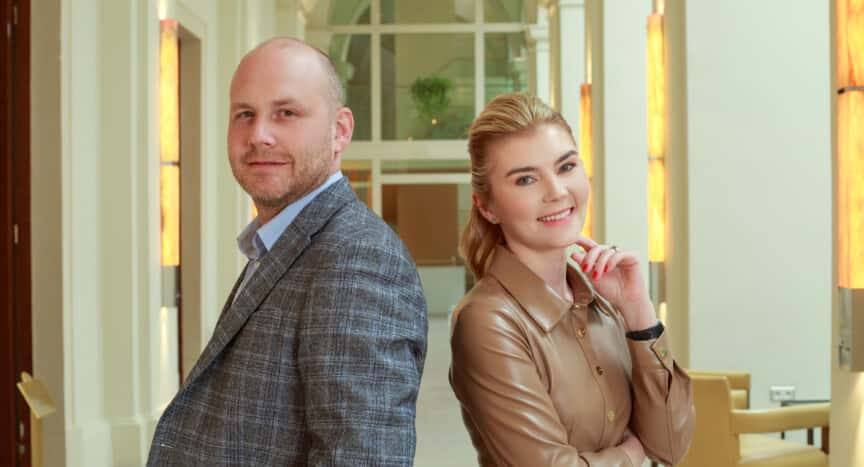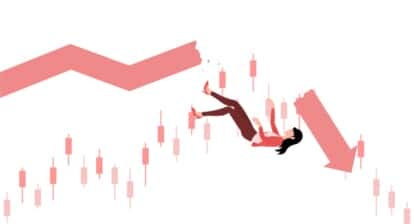Interview with Lenka O’Neill about the last years and fate of Pietro Filipi, about fashion brands in Czech market, and the impact of Brexit.
Lenka, you are very active in the fashion market in the Czech Republic, and during the last year you and your business partner Lukas Uhl also took in your hands management of the insolvency process of Pietro Filipi. Please tell us how that happened and why you decided to take over such a complex mandate?
Following the collapse of business due to the pandemic, it was very disappointing to say that Pietro Filipi had got into a trouble and fell into liquidation. My colleague Lukas Uhl had been approached by the creditor bank to come up with a plan of how to sell the recovered assets to obtain as high an amount as possible to pay the creditors.
This is what he agreed to, and he prepared a proposal to recover 1,4 Mil Euro against the secured claim (pledge) of 2 Mil Euro. In the end we succeeded in achieving a total of 2,5 Mil Euro. Usually, you can only obtain around 8 – 10% of the value of the asset which in this instance would be 800 000 Euro therefore not enough to cover the pledge. I had previously met my colleague when we were negotiating a marketplace co-operation at Zoot. My colleague Lukas Uhl had been the Zoot CEO at that time and he was managing the Zoot business through the insolvency and re-structuring that was forced upon the business at that time.
At the time we did not conclude a deal with Tamsin and Zoot as we could not agree terms on the margin. Some time later, my colleague has approached me to see if I would like to get involved with Pietro Filipi sell out of secured assets.
How did the year of your work on Pietro Filipi insolvency look for you? What were your major challenges? 
When we have overtaken the inventory for a total value of over 4 million Euros under the sales based contract, it was overwhelming. We had to relocate the inventories of 130 000 items of 18 stores including the central warehouse in Trutnov. The collections in the stores were at the time a winter season. The stores were showcasing beautiful wool coats, jackets, jumpers or blazers and it had happened that we were in hot July 2021.
We have initially drawn a matrix on how to separate the inventories seasonally and then by the category. What has made the difference while we were doing the inventory was that we have designed a scheme where we have collated boxes from the stores into the rows and categories by mono-category. Then into the columns and using mathematical formulas (matrix) that enabled us to get through in such a high-speed project that we could replenish the stores afterwards. The strategy of the pricing, dynamic sales, hiring ex Pietro staff, opening three stores in the original locations and regular events have proved to be right for this business case.
Could you please share with us what has initially led to the collapse of such a successful local fashion brand? Was it past years due to COVID or were there any major strategical faults prior to it?
I would split the collapse into 5 pillars. Pietro Filipi had established a flawed business model at the very beginning. You cannot possibly design and manufacture fashion within Czech and Slovak Republic. The demand from these two countries is not great enough. The whole set up was a high cost. When the original owner sold the business to the new owner of Pietro Filipi, had already shown a loss that time. You cannot lead a team of high profile designers to design the collection from a paper at the table in the Czech Republic and fulfill the local demand.
Second Pietro Filipi had got heavily over indebted. The company has used bank loans, investment money and in the end they released bonds. The value of the debt was around 52 Mil Euro. The assets could not support such a level of debt.
Third Pietro Filipi wanted to expand to Baltic countries which in the end proved to be the wrong strategy and again it has burned the investors’ money. A far better option would have been to instead find a franchise partner who would look after the stores over there rather than making the expansion remotely.
At the last but not very least, another business hurdle was the overproduction of the men’s collection. The product offering historically was split by 70/30 women and men. There was a massive overproduction of men’s formal jackets and suits. Men’s fashion is rather expensive with all Italian exclusive materials, for instance each button would costs 4 Euro and to make one formal men’s jacket is very time consuming and requires specialized labour. We have seen huge overproduction when we have overtaken the inventories. We were rolling our eyes at the extent of the over stocking. At very last the Covid pandemic came in 2020 and this closed all the stores. In January 2021 all the employees have been made redundant by letter.
 Were there still any possibilities to save it from bankruptcy if there were any actions taken on time? If so, what could that be?
Were there still any possibilities to save it from bankruptcy if there were any actions taken on time? If so, what could that be?
In my opinion the company could not be saved as the total debt was too high. What could have been done was to change the entire set up of the production of the collections. Instead of having a local design team and the local manufacture I would find a factory where they could guarantee being able to make the volume in efficient time and required quality. Look to embrace the catalogue manufacturers instead of hand detailed attention to each garment which resulted in high expense which was not recoverable in sales.
What are the main lessons that you think Czech fashion brands should learn from the Pietro Filipi situation?
You must understand where each penny goes in your company. It doesn’t mean you have to be penny-pinching all the time though. Optimalization of all the manufacturing operations. Be as efficient and cost effective as possible within the processes. Count on the margin which is the fundamental objective of running a healthy business.
To always be aware of how much the company can comfortably borrow, especially about bonds issued to the market/investors. Bonds didn’t appear suitable to a loss making company.
Lenka, you are also a Founder of the Tamsin. Please tell us about it?
Yes I am the founder of Tamsin which is a platform offering British fashion. We have been focusing on a virtual catalogue with a vast choice and a few days delivery from England. At some point we had over 10 K styles. We have been collaborating with the big players on the UK high street and online such as Boohoo, Pretty Little Thing, Little Mistress, Closet London or River Island.
Our main USP was to sell dresses. We have created an online dress manual to make it as easy as possible to buy a dress in one click. Our customer could choose what body silhouette she wears, her favorite sleeve or neckline, her favorite length, or the other details. This concept was fun but very difficult on the logistical processes within an international field.
I have started the company in Chelsea in London where I was living at that time and the company was remote based from the start. I had employees working in Czech while I was living in London flying to Czechia every month. This was the start of remote working on Skype 10 years ago.
 How was your business affected by Brexit?
How was your business affected by Brexit?
Brexit and Covid pandemic has transformed the business rapidly. Brexit has limited International business entirely. Before Brexit we could ship inventories within 4 working days as part of the EU. After January 2021 everything has changed: long delivery leads, admin paperwork overload that you almost need to hire a person to do just this job, custom duty 12%, admin and courier fees and VAT duty for B2C. I remember the very first days when all these changes have been implemented and the chaos that people at the border or the courier companies had no idea what to do. We were waiting for shipments for a month.
We also hear now about other brands exiting Czech market or largely reducing their presence, such as Italian Caprisa, French Promod, British Next, now also German Orsay. Why is it happening?
The Covid pandemic has changed a great deal about the fashion market. First of all prior to the pandemic the market went through the consolidation of the fashion market with the big players in general. One of the highly respected investor and founder Martin Rozhoň said a very interesting sentence a few years ago about what was coming. I remembered his comment which appeared to be right that big players were buying SMEs e.g. Mall bought Vivantis, Zoot merged with Bibloo, Urbanstore and Different and Fashiondays, Modissimo and Bigbrands have gone.
Then e-commerce started to feel the strain with the cost of refunds. Zalando and Zoot regularly reported over 50%. That is a life threat to the core business.
Personalization, automatization, and the algorithms play a big role in an e-commerce business which involves investments. And last but not very least the coming Amazon to the online fashion market. Online sales cover a 16% share of total retail market according APEK. Therefore, the core of retail are still the bricks and mortar sector which had suffered with the closing of stores during the pandemic.
Unfortunately, listed brands above such as Promod or Next didn’t make it through for several reasons and my last information about Orsay is that HQ in Germany got into liquidation and the shops in the Czech Republic have gone under the wing of EMEA acquisitions and will be sold online. The fashion market has changed rapidly and it is heartbreaking to see the damage.
And what are you major plans for the next year? What will be your next big project?
We have kept the Pietro Filipi Collection store on Narodni, with my colleague Lukas Uhl as we could have not closed it. We have hired ex Pietro employees who were such a great support during the insolvency that we have decided to keep it and open a multi-brand concept. We have managed to open contracts with International brands such Gerry Weber, Olymp, Selected femme, Carl Gross for suits, Seidensticker for shirts, cashmere scarves from Fraas and Czech brands for handbags Hein or Mr. Junk for hand made gloves etc.
We are very excited to bring to our customers such similar as possible brands to that of Pietro Filipi that we can satisfy them in their expected high customer service standard. Our mission is the creation of a multi-brand concept where the customer gets served in the best possible way with our Pietro team. The aim is for the best sustainable fashion which will be everlasting. Please come and visit us.







